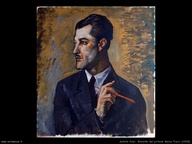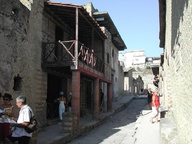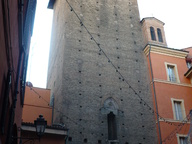Celestial Horses. Equestrian depictions in ancient China
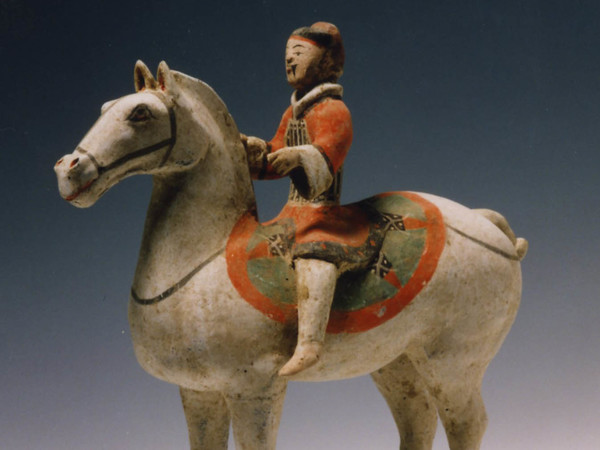
Cavaliere corazzato e con faretra su cavallo bianco terracotta grigia, ingobbio, pigmenti stesi a freddo 28,4 x 28,3 x 11,8 cm. Cina, Shaanxi Han Occidentali, II secolo a.C. Proprietà Compagnia di San Paolo
From 21 Novembre 2014 to 22 Febbraio 2015
Turin
Place: MAO - Museo di Arte Orientale
Address: via San Domenico 11
Times: Tuesday to Sunday 10am-6pm
Ticket price: full € 10, reduced € 8, free under 18 yrs.
Telefono per informazioni: +39 011 4436927
E-Mail info: mao@fondazionetorinomusei.it
Official site: http://www.maotorino.it
The horses were a symbol of social status for the strong Chinese elite of all times and one of those most represented in the art of imperial China. Emblems of nobility, elegance, speed and power, have been enriched over time of supernatural values cloaked legendary accounts. Among the most famous of these myths are that of "Celestial Horses," extraordinary horses capable of carrying those who rode in the land of the immortals. On the occasion of the Year of the Horse, the Oriental Art Museum is a tribute to this creature that has had so much weight in the history of peoples with an exhibition devoted to it.
Through forty works from the collections of the museum from a private collection in Turin, the exhibition explores the importance of the figure of the horse in art and culture of ancient China with spectacular funerary statues in the round in the period from the Han dynasty (206 BC - 220 AD) to the Tang Dynasty (618-907 AD), archaic elements of harnesses and wagons (XI cent. BC - II century AD.), reliefs and painted pottery (II cent. BC - I century AD.). It is largely of terracotta sculptures painted and glazed, where the horses appear alone or in a dynamic relationship with the knight, colorful and enriched with details depending on the function that the image was to evoke and make a living.
The exhibition is divided into seven sections that correspond to different themes: war, commerce, leisure, until the evolution of forms between the Han and Tang. There are many aspects of history and culture that are interwoven in this itinerary. For example, as of the end of the fourth century BC, the adoption of the cavalry, the foundation for the establishment of the Empire; the opening of the "Silk Road" under the Han dynasty (206 BC - 220 AD), which had among its main engines research in the western regions of horses bigger and more powerful; the spread of a sport such as pole in the seventh and eighth centuries; up techniques and the design plastic, ranging from powerful stylization of the Han era idealized naturalism of Tang, passing through the elegance almost pictorial art "medieval" in the sixth century.
Through forty works from the collections of the museum from a private collection in Turin, the exhibition explores the importance of the figure of the horse in art and culture of ancient China with spectacular funerary statues in the round in the period from the Han dynasty (206 BC - 220 AD) to the Tang Dynasty (618-907 AD), archaic elements of harnesses and wagons (XI cent. BC - II century AD.), reliefs and painted pottery (II cent. BC - I century AD.). It is largely of terracotta sculptures painted and glazed, where the horses appear alone or in a dynamic relationship with the knight, colorful and enriched with details depending on the function that the image was to evoke and make a living.
The exhibition is divided into seven sections that correspond to different themes: war, commerce, leisure, until the evolution of forms between the Han and Tang. There are many aspects of history and culture that are interwoven in this itinerary. For example, as of the end of the fourth century BC, the adoption of the cavalry, the foundation for the establishment of the Empire; the opening of the "Silk Road" under the Han dynasty (206 BC - 220 AD), which had among its main engines research in the western regions of horses bigger and more powerful; the spread of a sport such as pole in the seventh and eighth centuries; up techniques and the design plastic, ranging from powerful stylization of the Han era idealized naturalism of Tang, passing through the elegance almost pictorial art "medieval" in the sixth century.
SCARICA IL COMUNICATO IN PDF
COMMENTI

-
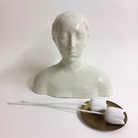 Dal 26 febbraio 2025 al 05 maggio 2025
Venezia | Museo Fortuny
Dal 26 febbraio 2025 al 05 maggio 2025
Venezia | Museo Fortuny
-
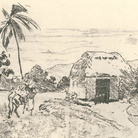 Dal 01 marzo 2025 al 29 giugno 2025
Torino | Museo Storico Nazionale d’Artiglieria dell’Esercito – Mastio della Cittadella
Dal 01 marzo 2025 al 29 giugno 2025
Torino | Museo Storico Nazionale d’Artiglieria dell’Esercito – Mastio della Cittadella
-
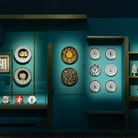 Dal 27 febbraio 2025 al 29 giugno 2025
Milano | Palazzo Reale
Dal 27 febbraio 2025 al 29 giugno 2025
Milano | Palazzo Reale
-
 Dal 28 febbraio 2025 al 09 giugno 2025
Roma | Accademia di Francia a Roma – Villa Medici
Dal 28 febbraio 2025 al 09 giugno 2025
Roma | Accademia di Francia a Roma – Villa Medici
-
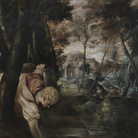 Dal 22 febbraio 2025 al 29 giugno 2025
Forlì | Museo Civico San Domenico
Dal 22 febbraio 2025 al 29 giugno 2025
Forlì | Museo Civico San Domenico
-
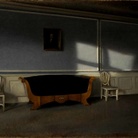 Dal 21 febbraio 2025 al 29 giugno 2025
Rovigo | Palazzo Roverella
Dal 21 febbraio 2025 al 29 giugno 2025
Rovigo | Palazzo Roverella
